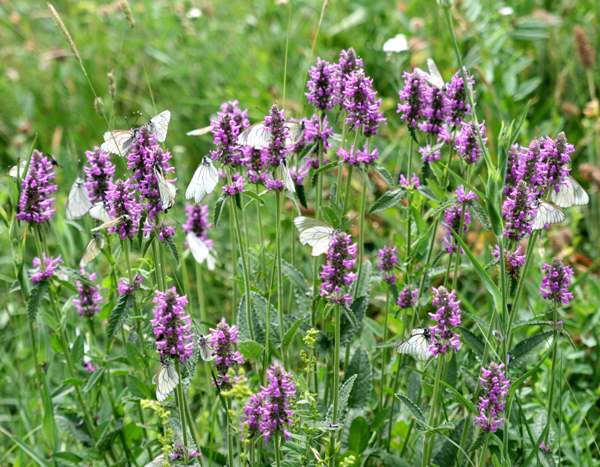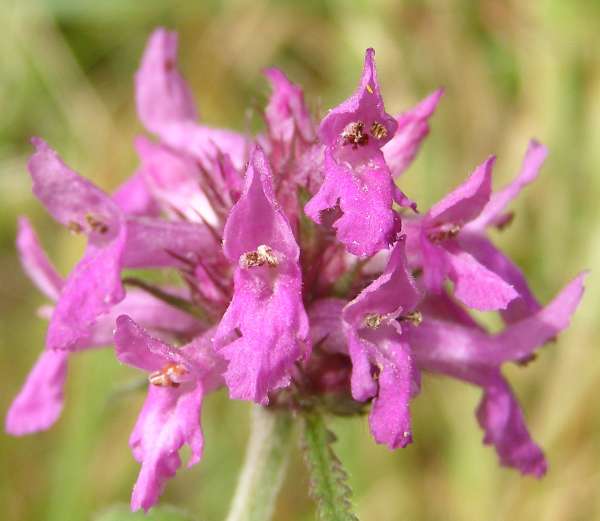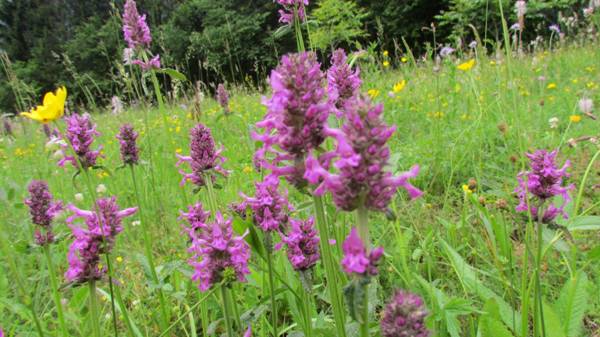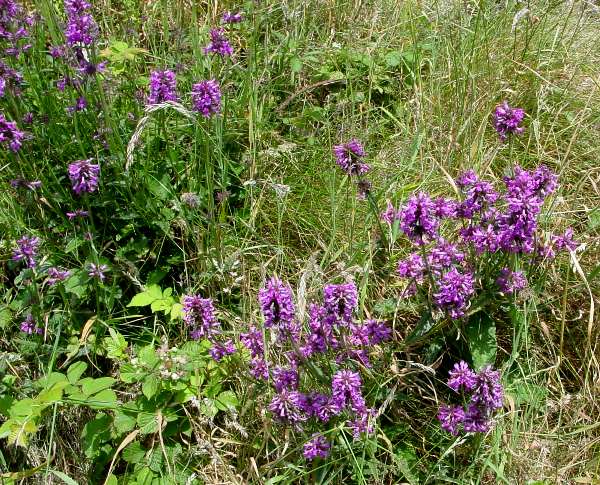Stachys officinalis - Betony
Phylum: Magnoliophyta - Class: Equisetopsida - Order: Lamiales - Family: Lamiaceae

Most of the relatively few wildflowers that keep us (and the butterflies) waiting until summer before making an appearance are well worth waiting for, and beautiful Betony is certainly no exception.
Description
This is a perennial plant that spreads mainly via its seeds. Betony flower heads, rather oblong in appearance compared with the more pyramidal form of most Stachys species, and typically 3cm across are on almost leafless stems, while the basal leaves are also narrow and toothed. Plants occasionally grows to a height of 60 cm, but 30cm is more typical. The bi-lobed bright , 12 to 18mm long, are a beautiful reddish purple or magenta colour.

Distribution
This striking wildflower is fairly common across most of southern England and Wales but it is absent from northern Britain and from most of Ireland except the far south west. Betony is native to Europe, Asia and northern Africa, but like so many plants used in herbal remedies it has been introduced to many other temperate regions.

Above: Betony in Slovenia
Habitat
Betony is a lowland wildflower that shows a preference for dryish light soils such as on sunny banks and hedgerows, on heathland and other grassy places including, occasionally, the undisturbed margins of arable fields.
Betony is a common sight in old country churchyards, where it was planted in the past in the belief that it had powers that would ward off ghosts, goblins and other unwelcome guests..
Blooming Times
In Britain and Ireland Betony puts in an appearance in late June and continues flowering until the end of September.

Uses
In the past various medicinal and magical powers were ascribed to betony:the Romans used it to treat headaches, and in the Middle Ages it was thought to serve asprotection against witchcraft.
Etymology
Stachys, the genus name, means 'spike of flowers', and plants in this genus do indeed produce flowers in spike form. The specific epithet officinalis, literally meaning official, indicates that this plant was recognised as having valuable pharmaceutical /medicinal properties.
Similar Species
Hedge Woundwort Stachys sylvatica and Marsh Woundwort Stachys palustris are similar in stature and form but their whorls of flowers are much more widely spaced and the upper lips of their flowers are generally more hooded.
The Betony flowers shown on this page were photographed in Bulgaria and in Slovenia in June and in West Wales during July.
Please Help Us: If you have found this information interesting and useful, please consider helping to keep First Nature online by making a small donation towards the web hosting and internet costs.
Any donations over and above the essential running costs will help support the conservation work of Plantlife, the Rivers Trust and charitable botanic gardens - as do author royalties and publisher proceeds from books by Pat and Sue.



